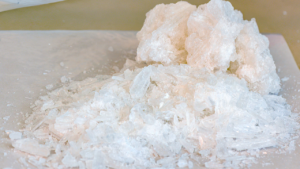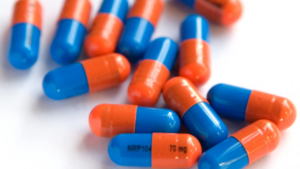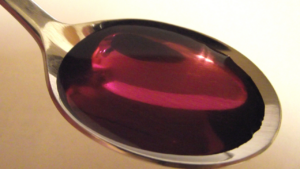Know the Symptoms: How to Spot a Cocaine Overdose
If you believe you or someone you know has overdosed on cocaine, call 911 immediately. It’s just one line. It’s only my first time. It could help make the party more fun. Everyone at the party is doing it, so it must be fine. The thing about cocaine, like any drug, is that it can affect everyone differently. While cocaine is well known, information surrounding it is often tied to pop culture, such as references in music, movies, and books. However, there should be a deeper understanding of the drug, its effects, and the dangers it poses. In an Ohio Drug Assessment Update, the National Drug Intelligence Center saw twice as many Ohioans enter treatment for cocaine addiction compared to heroin addiction. Cocaine is often cut with other substances, fentanyl being an incredibly common nowadays. The Ohio Department of Health found that 77% of all cocaine-related drug overdoses involved cocaine laced with fentanyl, often unknown to the user since the color and texture is similar. According to the U.S. National Library of Medicine, “Cocaine is a white powder. It can be snorted up the nose or mixed with water and injected with a needle. Cocaine can also be made into small white rocks, called crack. Crack is smoked in a small glass pipe.” On the streets, cocaine might be referred to as:
- Blow
- Coca
- Coke
- Crack
- Flake
- Snow
There are plenty of reasons you should refrain from ingesting cocaine. Aside from possibly developing an addiction and the issues that come along with it, there lies the chance of an overdose. An overdose occurs when you consume too much of a drug. This can be very dangerous, which is why knowing how to spot symptoms of a cocaine overdose can be lifesaving.
What Does a Cocaine Overdose Look Like?
Despite what some people may tell you, cocaine overdoses are very real. Health complications, or worse, can occur even after the very first dose of cocaine. The National Institutes of Health (NIH) says those who consume cocaine typically drink alcohol at the same time or mix it with other drugs such as heroin, which just adds to its dangerous effects. When it comes to a cocaine overdose, symptoms can range from mild to severe, including:
- High body temperature
- Nausea
- Vomiting
- Chest pain
- Tremors
- Panic
- Paranoia (fear someone or something might hurt you)
- Anxiety
- Hallucinations (seeing or hearing things that aren’t there)
- Breathing problems
- Agitation
- High blood pressure
- Irregular heart rhythm
- Seizures
- Heart attack
- Stroke
Similarly, the symptoms of a crack cocaine overdose may include:
- Black phlegm
- Itchiness
- Cold sweats
- Heart attack
- Stroke
- Seizures
- Irregular heartbeat
Although symptoms differ for everyone, a cocaine overdose is a medical emergency and should be treated as such. If you or someone you know may have overdosed on cocaine, call 911 right away. According to the NIH, “There is no specific medication that can reverse a cocaine overdose. Management involves supportive care and depends on the symptoms present. For instance, because cocaine overdose often leads to a heart attack, stroke, or seizure, first responders and emergency room doctors try to treat the overdose by treating these conditions … ” Emergency personnel will typically attempt to restore blood flow to the heart in the event of a heart attack, restore oxygen to the brain if a stroke occurs, or they may try to stop a seizure.
A Dangerous Combination: Cocaine and Fentanyl
You’ve probably heard of fentanyl. It’s a synthetic opioid that has often been reported on because of its dangerous effects. What makes the drug so dangerous is that it’s easily mixed with other drugs, like cocaine. Fentanyl is 50 to 100 times more potent than morphine. The NIH reports, “Some drug dealers are mixing fentanyl with other drugs, such as heroin, cocaine, methamphetamine, and MDMA. This is because it takes very little to produce a high with fentanyl, making it a cheaper option. This is especially risky when people taking drugs don’t realize they might contain fentanyl as a cheap but dangerous additive. They might be taking stronger opioids than their bodies are used to and can be more likely to overdose.” While fentanyl is a prescription drug usually given to treat people with serious or chronic pain, it can be made outside of the medical world. When fentanyl is illegally sold, it comes in the form of a powder, eye drops, nasal sprays, pills, or dropped onto blotter paper. These forms make it that much easier to mix with drugs like cocaine without the person consuming it knowing, which can lead to a greater risk of addiction. As we mentioned earlier, unsuspecting cocaine users in Ohio often find out too late that their cocaine was laced with fentanyl.
Cocaine overdose is a critical medical emergency that demands immediate attention and understanding. Recognizing the signs and symptoms of a cocaine overdose is crucial for both individuals using the drug and those who may encounter someone in distress. Symptoms often include severe agitation, high body temperature, rapid heartbeat, and in some cases, seizures. While this blog provides a foundational understanding, it’s essential to consult medical professionals and credible sources for comprehensive information. Our commitment is to offer insights that encourage informed decisions, but always remember, in cases of emergency, seek immediate medical assistance. Stay informed, stay safe, and let’s work together to combat the challenges posed by drug abuse.
What Else Does Cocaine Do?
Those who consume cocaine do so in hopes of achieving feelings of pleasure, energy, and mental alertness. Some people who consume cocaine depend on it to complete mental or physical tasks. While there are a few different ways to consume cocaine, two of the most common are snorting it or smoking it (in its “crack” form). Typically, it takes three times as long to feel cocaine’s effects if it’s snorted versus smoked. However, the effects tend to last longer when snorted. While cocaine is consumed for feelings of pleasure and energy, in the short term, cocaine may produce the following negative side effects:
- Constricted blood vessels
- Increased body temperature
- Increased heart rate
- Increased blood pressure
- Dilated pupils
- Restlessness
- Irritability
- Panic
- Anxiety
- Paranoia
- Odd behaviors
In the long term, regularly snorting cocaine may cause:
- Loss of sense of smell
- Nasal septum irritation
- Problems swallowing
- Nosebleeds
- Chronic runny nose
Long-term effects of smoking crack cocaine include:
- Lung damage
- Asthma complications
In addition to these complications, regular consumption of cocaine can lead to the need for more frequent and larger amounts of cocaine to achieve the desired effects. This can lead to things like cocaine dependence and ultimately addiction.
Signs of Cocaine Addiction
If you believe you or someone you know has developed a cocaine addiction, it can be defeated. However, the first step toward overcoming addiction is realizing you might have one. Signs of cocaine addiction may include, but are not limited to:
- Poor performance at your job or school
- Being unable to stop consuming cocaine despite wanting to
- Changes in mood or behavior
- Problems with family and/or friends as a result of cocaine
- Money problems from purchasing cocaine
- Spending lots of time consuming cocaine
- Overdose
You may also experience withdrawal symptoms if you regularly consume cocaine or have an addiction and then stop consuming the drug.
Identifying Cocaine Withdrawal
According to the U.S. National Library of Medicine, cocaine withdrawal can include intense, powerful cravings for cocaine. When it isn’t consumed, or after a cocaine binge, what’s known as a crash usually follows. While cocaine withdrawal typically does not have any visible physical symptoms, it can still be uncomfortable. Withdrawal symptoms can include:
- Depression
- A general feeling of discomfort
- Nightmares
- Fatigue
- Agitation
- Restlessness
- Increased appetite
- Anxiety
- Irritability
- Sleepiness
If you are experiencing cocaine withdrawal symptoms, seeking professional treatment can help make the process more comfortable.
How Is Cocaine Addiction Treated?
Each person battling a cocaine addiction is unique, which is why their treatment should be as well. For those with an addiction to cocaine, a cocaine treatment center such as The Bluffs is typically recommended. By using evidence-based treatments such as cognitive-behavioral therapy and dialectical behavior therapy, unhealthy habits and thoughts can be addressed and changed. Recreational activities, such as yoga and hiking, may also provide a healthy alternative to cocaine consumption. No matter what, cocaine does not have to control your life. You can leave it behind.
Live a Life Free of Cocaine
Here at The Bluffs, we understand your situation is unique, which is why we will create a treatment plan just for you. Our inpatient cocaine rehab program will address the symptoms of your addiction and daily-life contributors that may affect it. We also offer recreational activities as a healthy alternative to cocaine consumption. No one should ever have to face addiction alone. Whether it’s you or a loved one, we’re here to help every step of the way. To learn more, call (888) 481-7821.
Frequently Asked Questions
What are the symptoms of a cocaine overdose? Cocaine overdoses should be treated as a health emergency. If you believe you or someone you know may have overdosed on cocaine, call 911 immediately. Symptoms include high body temperature, nausea, vomiting, chest pain, tremors, panic, paranoia, anxiety, hallucinations, breathing problems, high blood pressure, seizures, irregular heart rhythm, heart attack, and stroke. Emergency personnel will typically attempt to restore blood flow to the heart in the event of a heart attack, restore oxygen to the brain if a stroke occurs, or they may try to stop a seizure. What does cocaine look like? Cocaine is typically a white, crystalline powdered substance. Those who consume cocaine do so by either snorting it, injecting it, or rubbing it into their gums. Another form of cocaine, known as crack cocaine, is a rock-like substance that can be found in a variety of colors such as white, brown, yellow, and pink. Crack is usually smoked through a glass pipe. Both forms of cocaine can be addictive. How is cocaine addiction treated? Cocaine addiction treatment should be tailored to the needs of the individual, which is why evidence-based treatments such as cognitive-behavioral therapy and dialectical behavior therapy are used to identify unique unhealthy habits and thoughts. Through therapy, these thoughts and habits can be changed. Recreational activities may also be used to provide a healthy alternative to cocaine.







